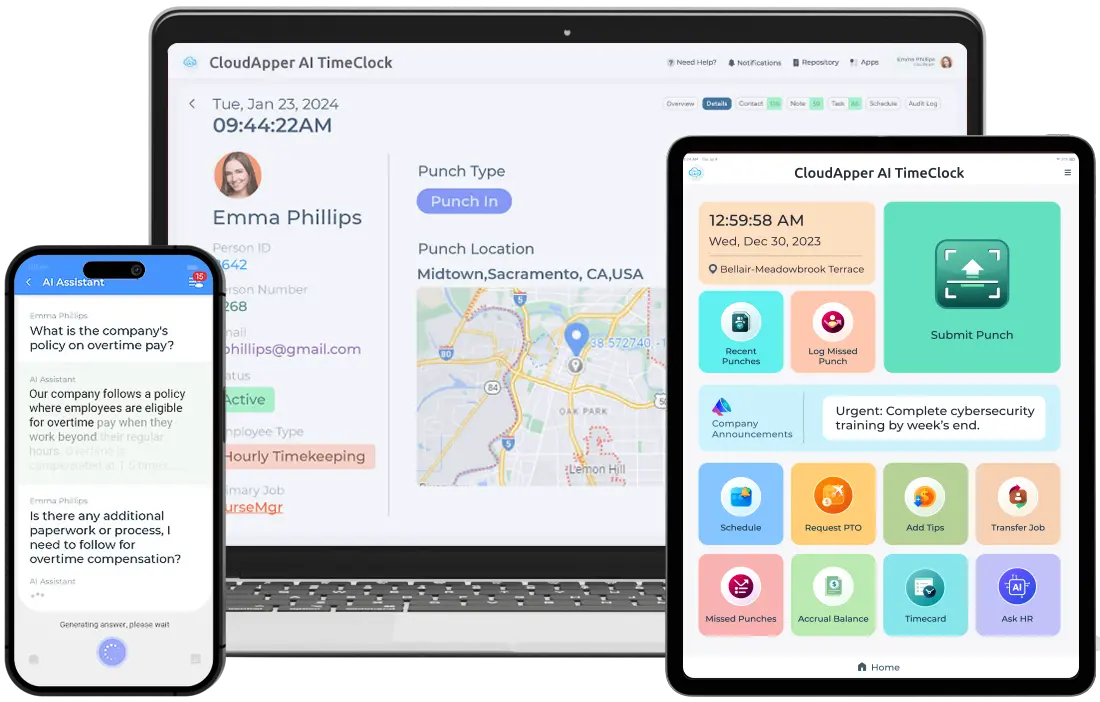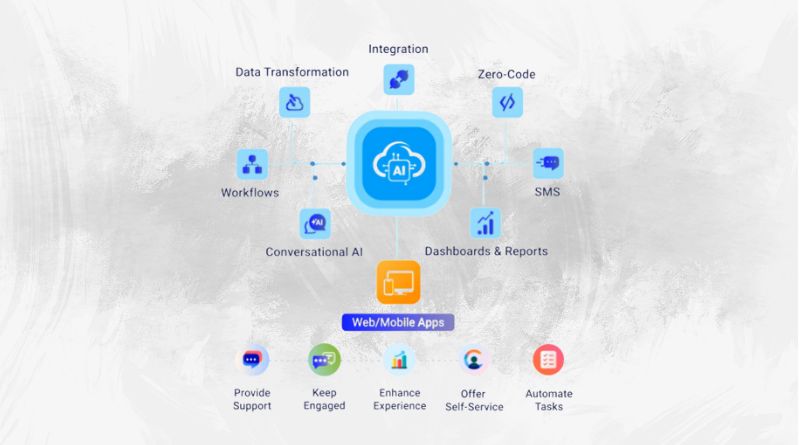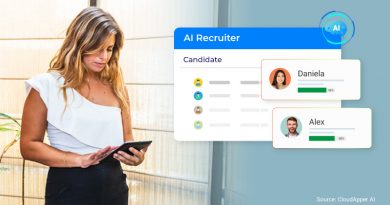How Business Can Reduce Labor Cost With AI
Artificial intelligence (AI) is transforming how organizations operate and manage labor costs. As businesses face rising wages and a global shortage of skilled labor, many companies are turning to AI to streamline operations and optimize workforce management. The potential to reduce labor costs with AI is immense, but while some companies are successfully leveraging AI, others are falling behind due to the perceived complexities of adoption.
Streamlining Workforce Management with AI
AI can significantly reduce labor costs by optimizing workforce management processes. One key area where AI makes a tangible impact is in accurately tracking employee work hours and monitoring performance. By using AI timekeeping systems, businesses can:
- Save on overtime expenses: AI TimeClock can help companies monitor overtime hours in real time, ensuring that employees are working within their designated schedules. This prevents unnecessary overtime and its associated costs.
- Reduce payroll errors: Manual payroll processing can lead to costly mistakes. AI TimeClock automatically tracks work hours and generates accurate payroll data, reducing errors that can result in overpayment or underpayment.
- Ensure fair pay: By using AI to track employee performance and hours accurately, businesses can ensure that employees are compensated fairly, reducing disputes and boosting overall employee satisfaction.

Many organizations are already adapting to AI tools that handle these tasks efficiently. For instance, CloudApper AI TimeClock can automatically calculate work hours and ensure compliance with labor laws, reducing the administrative burden on HR teams. This frees up time for HR professionals to focus on strategic initiatives rather than manual payroll tasks.
Reducing Hiring Costs with AI in Recruitment
The recruitment process is another area where businesses can reduce labor costs with AI. Hiring the wrong candidate not only increases the cost of training but also leads to decreased productivity and higher turnover rates. By incorporating AI into the recruitment process, companies can:
- Reduce time to hire: AI recruiting tools can screen resumes, assess candidates’ skills, and match them with job requirements in a fraction of the time that manual processes would take. This reduces the time spent on hiring and allows companies to onboard the right candidates more quickly.
- Improve hiring accuracy: AI systems can evaluate large volumes of candidate data to identify the best-fit candidates for a role. By using predictive analytics and machine learning algorithms, businesses can make more informed hiring decisions and reduce the risk of selecting under qualified employees, which saves on training costs and improves retention.
Companies that have embraced AI in recruitment are already seeing significant cost savings and improvements in the quality of hires. However, many businesses lag behind, struggling with the complexities of implementing AI into their recruitment workflows. CloudApper AI for recruitment cuts through complexity, biases, and deadlines using conversational AI. Ditch lengthy forms, speed up high-volume hiring, boost candidate experience, and reduce time-to-hire effortlessly.
Candidates face lengthy and complex applications, resulting in a staggering 92% drop-off rate
Boosting Productivity and Reducing Operational Costs
In addition to optimizing workforce management and recruitment, integrating AI into day-to-day business processes can further reduce operational costs and boost employee productivity. AI can automate repetitive tasks, such as data entry, scheduling, and inventory management, freeing employees to focus on higher-value tasks that drive innovation and growth.
By automating these tasks, businesses can operate more efficiently with fewer employees, reducing the need for additional staff. AI tools also provide real-time insights and analytics that help managers make informed decisions quickly, improving overall operational efficiency.
The Challenge of Adopting AI
Despite the clear benefits, some companies remain hesitant to adopt AI due to the complexity of implementation and the lack of in-house expertise. To fully realize the potential of AI, businesses need to invest in platforms that simplify AI integration and make the technology accessible even to non-technical teams. This is where solutions like CloudApper’s AI platform come into play. With over 25 years of experience in enterprise applications, we’ve created a platform to help customers deliver on this crucial need and seize the AI opportunity.
Conclusion
AI presents a unique opportunity for businesses to reduce labor costs, enhance productivity, and improve the overall efficiency of their workforce. From workforce management to recruitment, AI can streamline processes, reduce errors, and ensure better decision-making. As more organizations adapt to AI, those that hesitate risk falling behind and missing out on the cost-saving potential of this transformative technology. Now is the time for businesses to embrace AI and harness its power to reduce labor costs and thrive in a competitive market.













